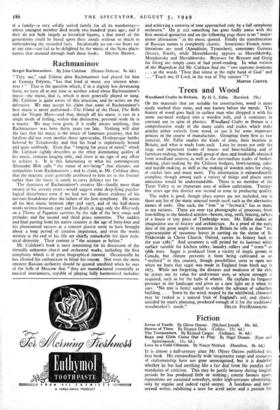Gentlemen of Scotland
Lowland Lairds. By James Fergusson. (Faber. 16s.) The Seven Sons of the Provost. By Henrietta Taylcr. (N Ison. 2Is.)
THE Scots " laird " occupied socially as well as geographically a position between that of the clan chieftain and the English country gentleman ; that is to say, he was less paternally related to his " inferiors" than the former but much more so than the latter. As Mr. Fergusson well says, he " maintained a rural patriarchy which, at its best, gave security and healthy employment to most of the country population." Throughout his Augustan Age—roughly from the Union of the Crowns to the Industrial Revolution—he was an asset to his country ; a "character" perhaps but an effective ; an " improver " when he stayed at home yet ready to go anywhere and do anything with reasonable success when he left it. He drank an inordinate quantity of claret and spoke with a broad accent, but with few real exceptions he was politically acute, well read and informed, progressive and patriotic. To illustrate this useful';- ndeed indispensable, class of Scot, Mr. Fergusson has picked out—rittber haphazardly or perhaps because he had already looked into their histories—eight specimens ; they include such interesting if untypical figures as the " gangster " Forrester of Torwood, that Squire-Osbaldistone-out-of-his-time Maule of Panmure and the landless Nisbet, a man given over to the science of heraldry. Prom these Mr. Fergusson passes to a more characteristic group, the "improvers "—though in a book with a bias towards south-west Scotland one might have expected to meet Patrick Miller of Dalswinton, who was probably as keen and effective an " improver " as any of the Kilkerran family here cited. The natural weakness of Mr. Fergusson's book is its lack of a con- trolling thread ; its strength the virility of its detailed portraiture. It cannot be said that the portraits are all of equal interest or are executed with equal vigour. Among the families mentioned by Mr. Fergusson is that of Kennedy, whose one-time ubiquitousness in South Ayrshire and Wigton became the theme of a local rhyme. They are given the centre of the stage by Miss Henrietta Tayler, who concentrates on a single generation of them—the seven sons of Sir Thomas Kennedy, Lord Provost of Edinburgh under James II in 1685 and 1686. Their story is set forth in a series of letters written to one another and about one another by the seven and their only sister between the years 1692 and 1754. Much of their content is necessarily small beer—endless personal intrigues over office or pension or mere liveli- hood—for though the Kennedys had some opportunity to meet the notables of the age they do not add much to our picture of them. And although they travelled far and widely—the Dutch East Indies, Russia, Spain, Germany, " Giberalter," Virginia—they have not left much account of what they saw ; while, with the exception of Brother William's almost first-hand narrative of the Battle of Sheriffmuir, they shirk the description of such major events as they took part in. The interest of the book therefore lies rather in the intimate family detail it reveals—for. instance, the "dentures" so secretly sent on approval to the eldest brother in 1733, and the steady emer- gence of variant and at times charming character among the seven. It is an extraordinary sensation to look so intimately into the affairs
of a family—a very solidly united family for all its wanderings— whose youngest member died nearly two hundred years ago ; and if they do not bulk largely as historical figures, a fine novel of the generations could be based upon their annals without so much as embroidering the recorded facts Incidentally no ear—no Scots car at any rate—can fail to be delighted by the music of the Scots place- names that resound through both these books. HILTON BROWN.



































 Previous page
Previous page